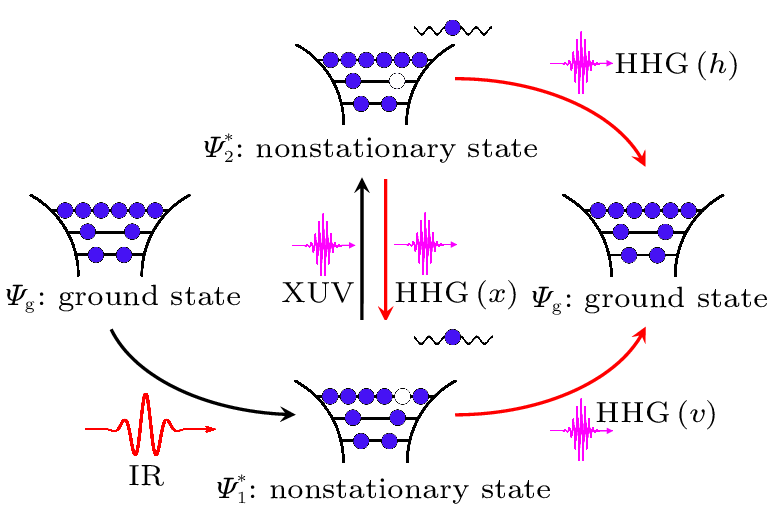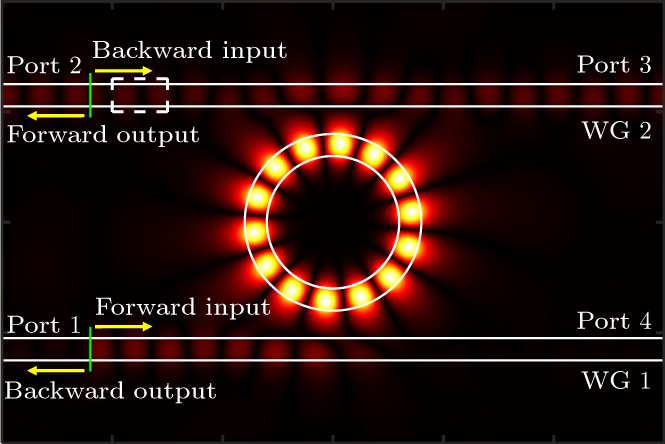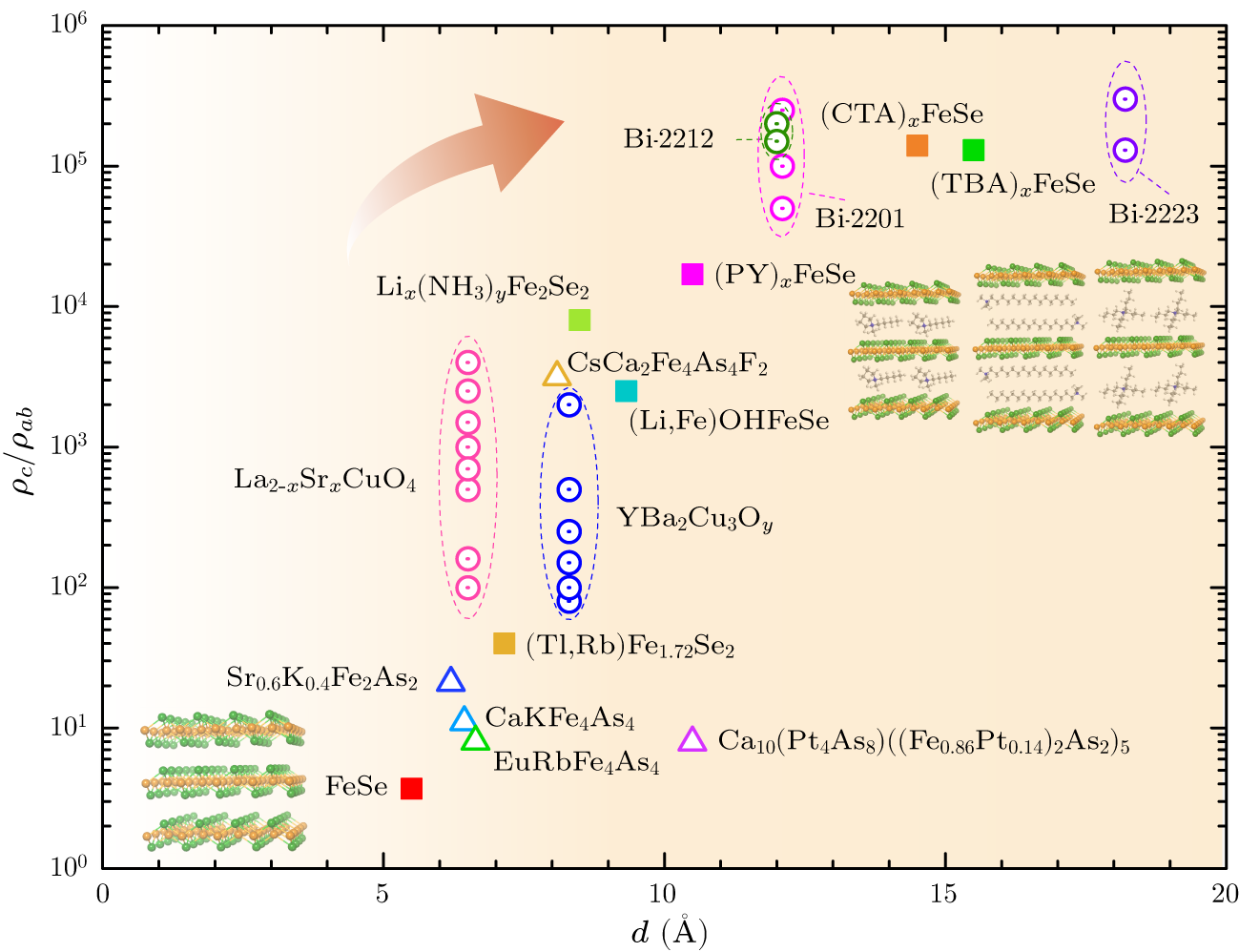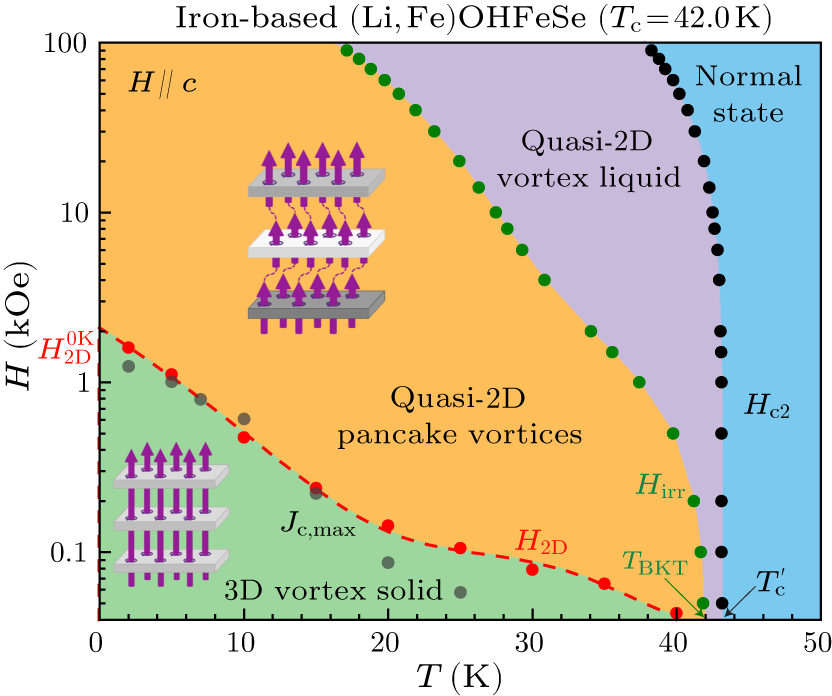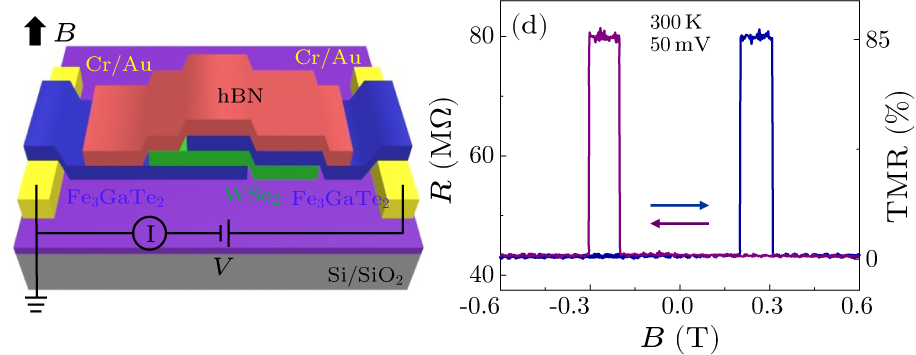|
|
Theory of Critical Phenomena with Memory
Shaolong Zeng, Sue Ping Szeto, and Fan Zhong
Chin. Phys. Lett. 2022, 39 (12):
120501
.
DOI: 10.1088/0256-307X/39/12/120501
Memory is a ubiquitous characteristic of complex systems, and critical phenomena are one of the most intriguing phenomena in nature. Here, we propose an Ising model with memory, develop a corresponding theory of critical phenomena with memory for complex systems, and discover a series of surprising novel results. We show that a naive theory of a usual Hamiltonian with a direct inclusion of a power-law decaying long-range temporal interaction violates radically a hyperscaling law for all spatial dimensions even at and below the upper critical dimension. This entails both indispensable consideration of the Hamiltonian for dynamics, rather than the usual practice of just focusing on the corresponding dynamic Lagrangian alone, and transformations that result in a correct theory in which space and time are inextricably interwoven, leading to an effective spatial dimension that repairs the hyperscaling law. The theory gives rise to a set of novel mean-field critical exponents, which are different from the usual Landau ones, as well as new universality classes. These exponents are verified by numerical simulations of the Ising model with memory in two and three spatial dimensions.
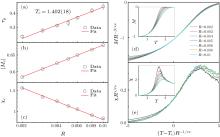
|
|
|
Whispering Gallery Mode Lasing Performance's Evolution of Floating GaN Microdisks Varying with Their Thickness
Gangyi Zhu, Mufei Tian, M. Almokhtar, Feifei Qin, Binghui Li, Mengyao Zhou, Fei Gao, Ying Yang, Xin Ji, Siqing He, and Yongjin Wang
Chin. Phys. Lett. 2022, 39 (12):
123401
.
DOI: 10.1088/0256-307X/39/12/123401
Optical gain and loss of microcavity greatly affect the quality of lasing, how to improve optical gain and decrease optical loss is of great significance for the preparation of laser. In this study, four types standard microdisks with different thicknesses of 2.2 µm, 1.9 µm, 1.7 µm, and 1.45 µm were fabricated by micromachining technology process to modulate optical gain and loss of microdisk lasing. The whispering gallery mode lasing in the ultraviolet range of GaN microdisk devices was investigated for these devices in order to clarify the effect of microdisk thickness on device characteristics. The quality factor $Q$ and lasing mode number for different thicknesses are calculated from the stimulated spectra. The lifetimes of the exciton combination properties of the devices were observed using time-resolved PL spectroscopy. The lasing modes are modulated, and the lifetime decreases, while the $Q$ factor of the devices first increases and then decreases with decreasing thickness. All these results are induced by optical gain and loss competition.
|
|
|
From Elastic Spin to Phonon Spin: Symmetry and Fundamental Relations
Jie Ren
Chin. Phys. Lett. 2022, 39 (12):
126301
.
DOI: 10.1088/0256-307X/39/12/126301
This work is mainly based on postgraduate lectures at Tongji University since 2020 spring. We firstly revisit the elastic spin and orbital angular momentum [ Proc. Natl. Acad. Sci. USA 115, 9951 (2018)] but more general for anisotropic systems by applying Noether's theorem to the elastic Lagrangian and by applying the symmetry argument in the field theory. Then, fundamental relations between elastic energy flux and elastic spin are uncovered. In particular cases, the wave spin is closely related to the vorticity of energy flux and momentum. Secondly, we move forward from the elastic spin to revisit the phonon spin [ Fizika Tverdogo Tela 3, 2160 (1961)] by applying the second quantization to elastic fields. We show that the uncovered phonon spin, a polarized elastic-vibration quanta, is generally not restricted to transverse phonon modes, but applying to general phonon modes, such as the longitudinal phonon modes, surface phonon modes, and hybridized phonon modes, regarded as a consequence of mode interferences. The elastic spin and phonon spin originate from the local rotating of the field polarization in time domain, not the local circulation (vorticity) of displacement or velocity in space domain. It is hopeful that the present results could advance the fundamental understanding of phonon spin and elastic spin, and promote the spin phononics for hybrid quantum sensing and technology with multiple degrees of freedom.
|
|
|
Two-Dimensional Electron Gas in MoSi$_{2}$N$_{4}$/VSi$_{2}$N$_{4}$ Heterojunction by First Principles Calculation
Ruiling Gao, Chao Liu, Le Fang, Bixia Yao, Wei Wu, Qiling Xiao, Shunbo Hu, Yu Liu, Heng Gao, Shixun Cao, Guangsheng Song, Xiangjian Meng, Xiaoshuang Chen, and Wei Ren
Chin. Phys. Lett. 2022, 39 (12):
127301
.
DOI: 10.1088/0256-307X/39/12/127301
Van der Waals (vdW) layered two-dimensional (2D) materials, which may have high carrier mobility, valley polarization, excellent mechanical properties and air stability, have been widely investigated before. We explore the possibility of producing a spin-polarized two-dimensional electron gas (2DEG) in the heterojunction composed of insulators MoSi$_{2}$N$_{4}$ and VSi$_{2}$N$_{4}$ by using first-principles calculations. Due to the charge transfer effect, the 2DEG at the interface of the MoSi$_{2}$N$_{4}$/VSi$_{2}$N$_{4}$ heterojunction is found. Further, for different kinds of stacking of heterojunctions, lattice strain and electric fields can effectively tune the electronic structures and lead to metal-to-semiconductor transition. Under compressive strain or electric field parallel to $c$ axis, the 2DEG disappears and band gap opening occurs. On the contrary, interlayer electron transfer enforces the system to become metallic under the condition of tensile strain or electric field anti-parallel to $c$ axis. These changes are mainly attributed to electronic redistribution and orbitals' reconstruction. In addition, we reveal that MoSi$_{2}$N$_{4}$/VSi$_{2}$N$_{4}$ lateral heterojunctions of armchair and zigzag edges exhibit different electronic properties, such as a large band gap semiconductor and a metallic state. Our findings provide insights into electronic band engineering of MoSi$_{2}$N$_{4}$/VSi$_{2}$N$_{4}$ heterojunctions and pave the way for future spintronics applications.
|
|
|
Evidence of Electronic Phase Separation in the Strongly Correlated Semiconductor YbB$_{12}$
A. Azarevich, N. Bolotina, O. Khrykina, A. Bogach, E. Zhukova, B. Gorshunov, A. Melentev, Z. Bedran, A. Alyabyeva, M. Belyanchikov, V. Voronov, N. Yu. Shitsevalova, V. B. Filipov, and N. Sluchanko
Chin. Phys. Lett. 2022, 39 (12):
127302
.
DOI: 10.1088/0256-307X/39/12/127302
We investigate high-quality single-domain crystals of YbB$_{12}$ using the precise x-ray diffraction technique in combination with the low-temperature polarized THz–infrared spectroscopy and accurate magnetotransport measurements. It is shown for the first time that this archetypal strongly correlated system with a metal-insulator transition to a mysterious dielectric ground state with a metal Fermi surface [ Science 362, 65 (2018) and ibid 362, 32 (2018)] is actually a heterogeneous compound in the regime of electronic phase separation. Changes in the configuration of the discovered dynamic charge stripes are proposed upon cooling. As a result, a conclusion is drawn in favor of a crossover between different patterns of the filamentary electronic structure penetrating the semiconducting matrix of YbB$_{12}$. We argue that the discovery of stripes in YbB$_{12}$ is fundamental, elucidating the nature of exotic dielectric state in Kondo insulators.
|
|
|
NMR Evidence for Universal Pseudogap Behavior in Quasi-Two-Dimensional FeSe-Based Superconductors
B. L. Kang, M. Z. Shi, D. Zhao, S. J. Li, J. Li, L. X. Zheng, D. W. Song, L. P. Nie, T. Wu, and X. H. Chen
Chin. Phys. Lett. 2022, 39 (12):
127401
.
DOI: 10.1088/0256-307X/39/12/127401
Recently, by intercalating organic ions into bulk FeSe superconductors, two kinds of layered FeSe-based superconductors [(TBA)$_{x}$FeSe and (CTA)$_{x}$FeSe] with superconducting transition temperatures ($T_{\rm c}$) above 40 K have been discovered. Due to the large interlayer distance ($\sim $15 Å), these new layered superconductors have a large resistivity anisotropy analogous to bismuth-based cuprate superconductors. Moreover, remarkable pseudogap behavior well above $T_{\rm c}$ is revealed by nuclear magnetic resonance (NMR) measurements on $^{77}$Se nuclei, suggesting a preformed pairing scenario similar to that of cuprates. Here, we report another new kind of organic-ion-intercalated FeSe superconductor, (PY)$_{x}$FeSe, with a reduced interlayer distance ($\sim $10 Å) compared to (TBA)$_{x}$FeSe and (CTA)$_{x}$FeSe. By performing $^{77}$Se NMR and transport measurements, we observe a similar pseudogap behavior well above $T_{\rm c}$ of $\sim $40 K and a large resistivity anisotropy of $\sim$$10^{\boldsymbol{4}}$ in (PY)$_{x}$FeSe. All these facts strongly support a universal pseudogap behavior in these layered FeSe-based superconductors with quasi-two-dimensional electronic structures.

|
|
|
Quasi-Two-Dimensional Nature of High-$T_{\rm c}$ Superconductivity in Iron-Based (Li,Fe)OHFeSe
Dong Li, Yue Liu, Zouyouwei Lu, Peiling Li, Yuhang Zhang, Sheng Ma, Jiali Liu, Jihu Lu, Hua Zhang, Guangtong Liu, Fang Zhou, Xiaoli Dong, and Zhongxian Zhao
Chin. Phys. Lett. 2022, 39 (12):
127402
.
DOI: 10.1088/0256-307X/39/12/127402
The intercalated iron selenide (Li,Fe)OHFeSe has a strongly layered structure analogous to the quasi-two-dimensional (2D) bismuth cuprate superconductors, and exhibits both high-temperature ($T_{\rm c}$) and topological superconductivity. However, the issue of its superconductivity dimensionality has not yet been fully investigated so far. Here we report that the quasi-2D superconductivity features, including the high anisotropy $\gamma = 151$ and the associated quasi-2D vortices, are also revealed for (Li,Fe)OHFeSe, based on systematic experiments of the electrical transport and magnetization and model fittings. Thus, we establish a new vortex phase diagram for (Li,Fe)OHFeSe, which delineates an emergent quasi-2D vortex-liquid state, and a subsequent vortex-solid dimensional crossover from a pancake-like to a three-dimensional state with decreasing temperature and magnetic field. Furthermore, we find that all the quasi-2D characteristics revealed here for the high-$T_{\rm c}$ iron selenide superconductor are very similar to those reported for high-$T_{\rm c}$ bismuth cuprate superconductors.

|
|
|
Predicted High-Temperature Superconductivity in Rare Earth Hydride ErH$_{2}$ at Moderate Pressure
Yiding Liu, Qiang Fan, Jianhui Yang, Lili Wang, Weibin Zhang, and Gang Yao
Chin. Phys. Lett. 2022, 39 (12):
127403
.
DOI: 10.1088/0256-307X/39/12/127403
Hydrides offer an opportunity to study high critical temperature (high-$T_{\rm c}$) superconductivity at experimentally achievable pressures. However, the pressure needed remains extremely high. Using density functional theory calculations, herein we demonstrate that a new rare earth hydride ErH$_{2}$ could be superconducting with $T_{\rm c} \sim 80$ K at 14.5 GPa, the lowest reported value for compressed hydrides to date. Intriguingly, due to Kondo destruction, superconductivity was prone to exist at 15 GPa. We also reveal an energy gap at 20 GPa on the background of normal metallic states. At 20 GPa, this compressed system could act as a host of superconductor judged from a sharp jump of spontaneous magnetic susceptibility with an evanescent spin density of state at Fermi level. Finally, electron pairing glue for ErH$_{2}$ at these three typical pressures was attributed to the antiferromagnetic spin fluctuation.
|
|
|
Frustrated Magnetic Interactions and Quenched Spin Fluctuations in CrAs
Yayuan Qin, Yao Shen, Yiqing Hao, Hongliang Wo, Shoudong Shen, Russell A. Ewings, Yang Zhao, Leland W. Harriger, Jeffrey W. Lynn, and Jun Zhao
Chin. Phys. Lett. 2022, 39 (12):
127501
.
DOI: 10.1088/0256-307X/39/12/127501
The discovery of pressure-induced superconductivity in helimagnets (CrAs, MnP) has attracted considerable interest in understanding the relationship between complex magnetism and unconventional superconductivity. However, the nature of the magnetism and magnetic interactions that drive the unusual double-helical magnetic order in these materials remains unclear. Here, we report neutron scattering measurements of magnetic excitations in CrAs single crystals at ambient pressure. Our experiments reveal well defined spin wave excitations up to about 150 meV with a pseudogap below 7 meV, which can be effectively described by the Heisenberg model with nearest neighbor exchange interactions. Most surprisingly, the spin excitations are largely quenched above the Néel temperature, in contrast to cuprates and iron pnictides where the spectral weight is mostly preserved in the paramagnetic state. Our results suggest that the helimagnetic order is driven by strongly frustrated exchange interactions, and that CrAs is at the verge of itinerant and correlation-induced localized states, which is therefore highly pressure-tunable and favorable for superconductivity.
|
|
|
A $dC/dV$ Measurement for Quantum-Dot Light-Emitting Diodes
Jingrui Ma, Haodong Tang, Xiangwei Qu, Guohong Xiang, Siqi Jia, Pai Liu, Kai Wang, and Xiao Wei Sun
Chin. Phys. Lett. 2022, 39 (12):
128401
.
DOI: 10.1088/0256-307X/39/12/128401
We present $dC/dV$ analysis based on the capacitance-voltage ($C$–$V$) measurement of quantum-dot light-emitting diodes (QLEDs), and find that some key device operating parameters (electrical and optical turn-on voltage, peak capacitance, maximum efficiency) can be directly related to the turning points and maximum/minimum of the $dC/dV$ (versus voltage) curve. By the $dC/dV$ study, the behaviors such as low turn-on voltage, simultaneous electrical and optical turn-on process, and carrier accumulation during the device aging can be well explained. Moreover, we perform the $C$–$V$ and $dC/dV$ measurement of aged devices, and confirm that our $dC/dV$ analysis is correct for them. Thus, our $dC/dV$ analysis method can be applied universally for QLED devices. It provides an in-depth understanding of carrier dynamics in QLEDs through simple $C$–$V$ measurement.
|
|
|
Large Room-Temperature Magnetoresistance in van der Waals Ferromagnet/Semiconductor Junctions
Wenkai Zhu, Shihong Xie, Hailong Lin, Gaojie Zhang, Hao Wu, Tiangui Hu, Ziao Wang, Xiaomin Zhang, Jiahan Xu, Yujing Wang, Yuanhui Zheng, Faguang Yan, Jing Zhang, Lixia Zhao, Amalia Patanè, Jia Zhang, Haixin Chang, and Kaiyou Wang
Chin. Phys. Lett. 2022, 39 (12):
128501
.
DOI: 10.1088/0256-307X/39/12/128501
A magnetic tunnel junction (MTJ) is the core component in memory technologies, such as the magnetic random-access memory, magnetic sensors and programmable logic devices. In particular, MTJs based on two-dimensional van der Waals (vdW) heterostructures offer unprecedented opportunities for low power consumption and miniaturization of spintronic devices. However, their operation at room temperature remains a challenge. Here, we report a large tunnel magnetoresistance (TMR) of up to 85% at room temperature ($T = 300$ K) in vdW MTJs based on a thin ($ < 10$ nm) semiconductor spacer WSe$_{2}$ layer embedded between two Fe$_{3}$GaTe$_{2}$ electrodes with intrinsic above-room-temperature ferromagnetism. The TMR in the MTJ increases with decreasing temperature up to 164% at $T = 10$ K. The demonstration of TMR in ultra-thin MTJs at room temperature opens a realistic and promising route for next-generation spintronic applications beyond the current state of the art.
|
17 articles
|

